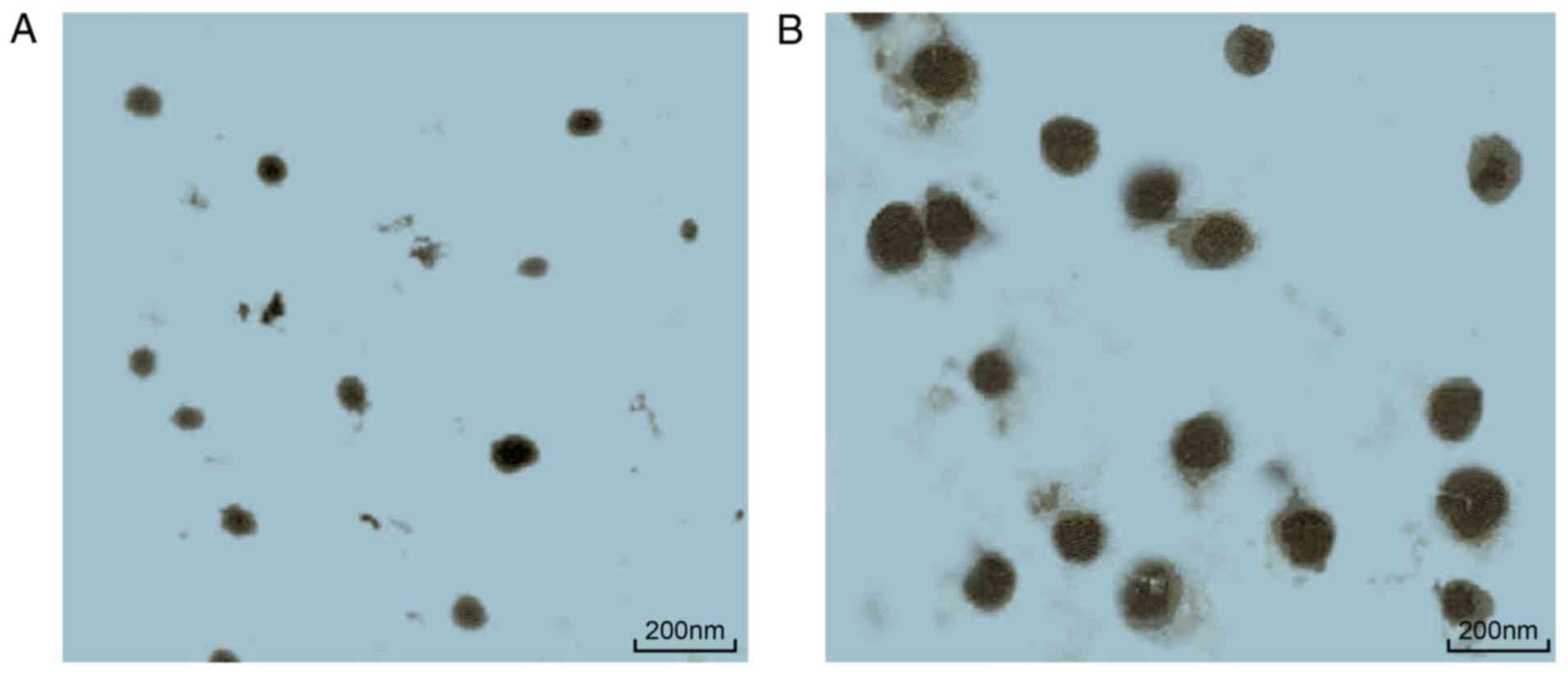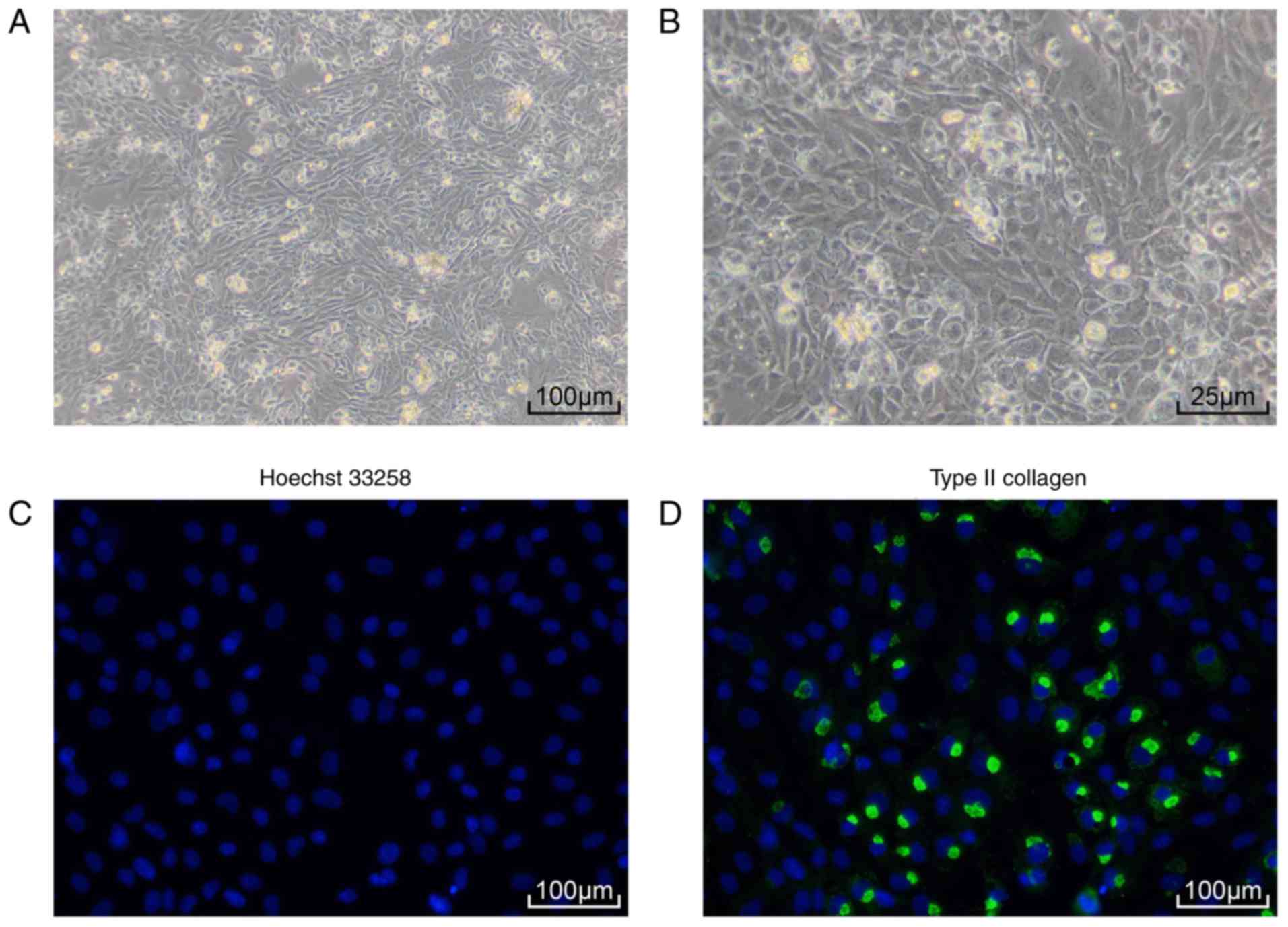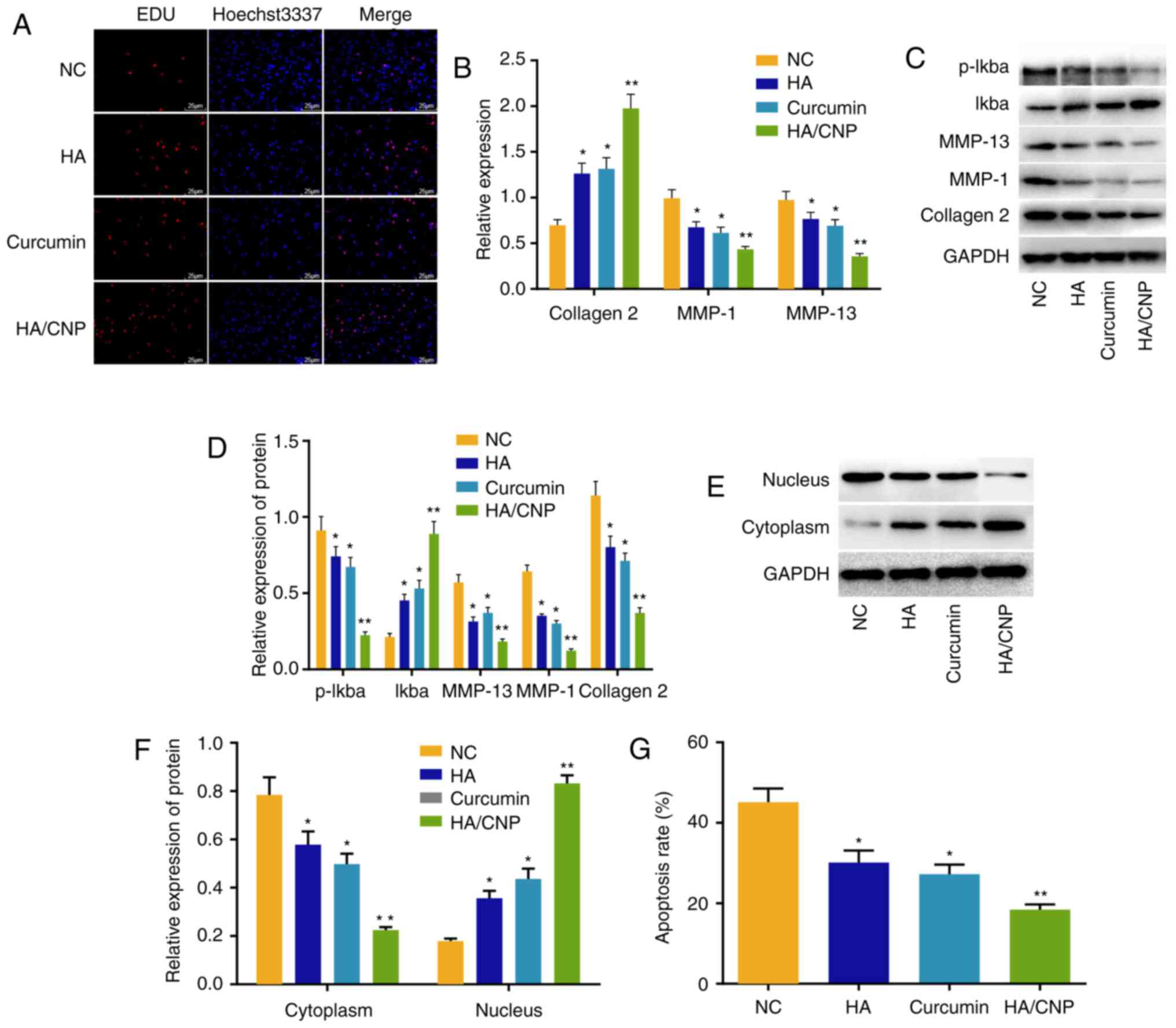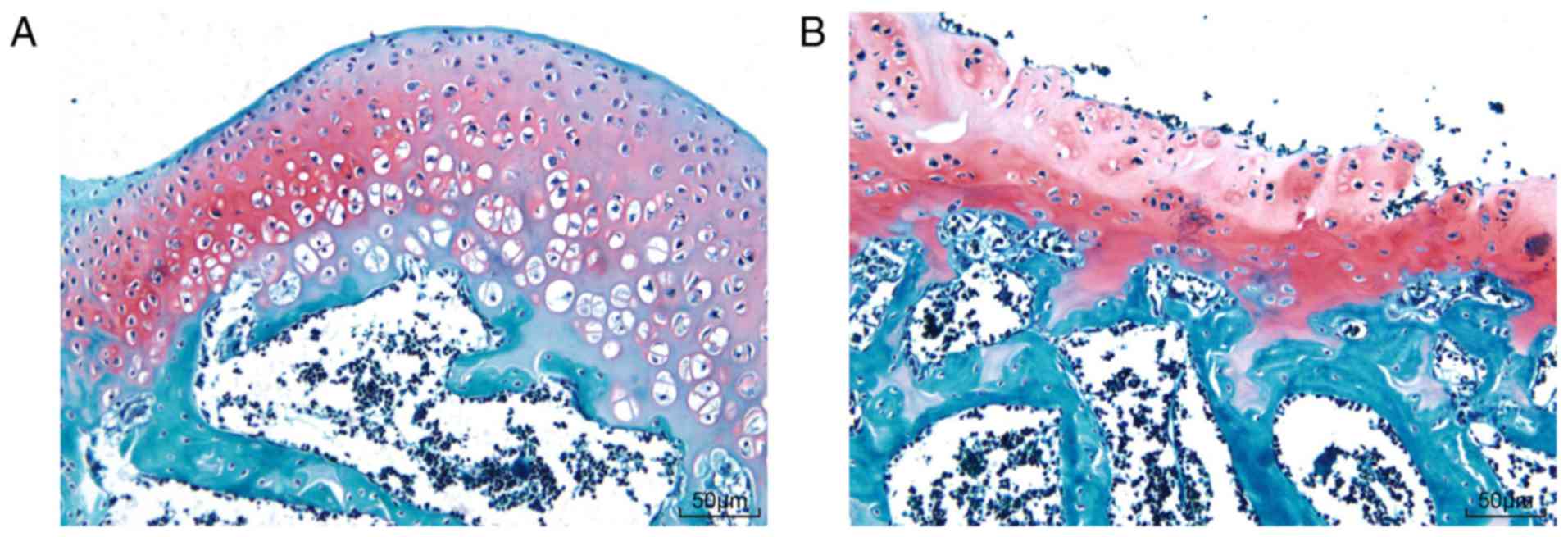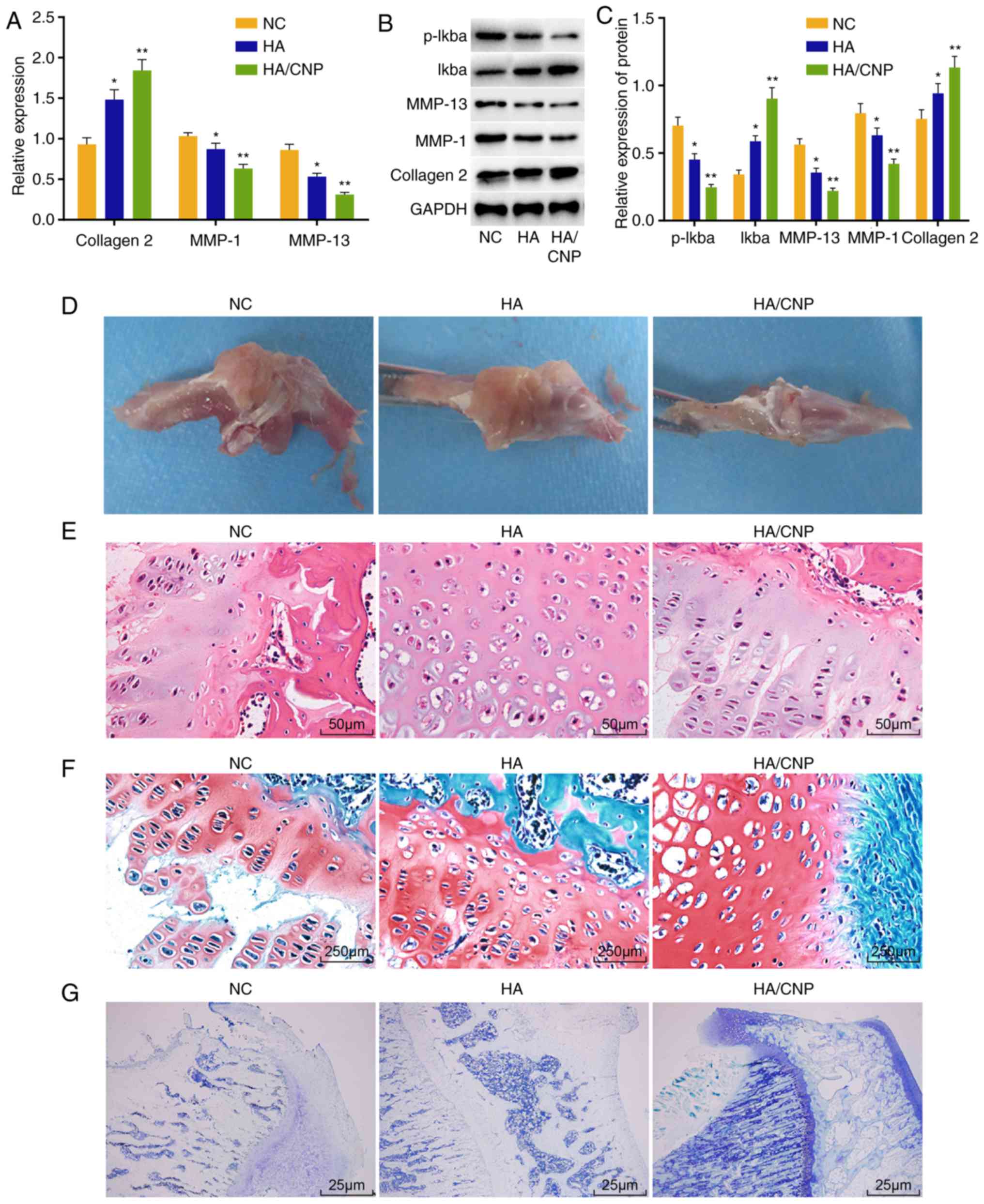|
1
|
Wu Q, Sun X and Du L: Association of
fibulin-3 concentrations with the presence and severity of knee
osteoarthritis: A cross-sectional study. Knee. 24:1369–1373. 2017.
View Article : Google Scholar : PubMed/NCBI
|
|
2
|
Ogunbode AM, Adebusoye LA, Olowookere OO
and Alonge TO: Physical functionality and self-rated health status
of adult patients with knee osteoarthritis presenting in a primary
care clinic. Ethiop J Health Sci. 24:319–328. 2014. View Article : Google Scholar :
|
|
3
|
Runhaar J, van Middelkoop M, Reijman M,
Willemsen S, Oei EH, Vroegindeweij D, van Osch G, Koes B and
Bierma-Zeinstra SM: Prevention of knee osteoarthritis in overweight
females: The first preventive randomized controlled trial in
osteoarthritis. Am J Med. 128:888–895.e4. 2015. View Article : Google Scholar : PubMed/NCBI
|
|
4
|
Ji B, Guo W, Ma H, Xu B, Mu W, Zhang Z,
Amat A and Cao L: Isoliquiritigenin suppresses IL-1β induced
apoptosis and inflammation in chondrocyte-like ATDC5 cells by
inhibiting NF-κB and exerts chondroprotective effects on a mouse
model of anterior cruciate ligament transection. Int J Mol Med.
40:1709–1718. 2017.PubMed/NCBI
|
|
5
|
Ricci M, Micheloni GM, Berti M, Perusi F,
Sambugaro E, Vecchini E and Magnan B: Clinical comparison of oral
administration and viscosupplementation of hyaluronic acid (HA) in
early knee osteoarthritis. Musculoskelet Surg. 101:45–49. 2017.
View Article : Google Scholar
|
|
6
|
Zhang Z, Leong DJ, Xu L, He Z, Wang A,
Navati M, Kim SJ, Hirsh DM, Hardin JA, Cobelli NJ, et al: Curcumin
slows osteoarthritis progression and relieves
osteoarthritis-associated pain symptoms in a post-traumatic
osteoarthritis mouse model. Arthritis Res Ther. 18:1282016.
View Article : Google Scholar : PubMed/NCBI
|
|
7
|
Salwowska NM, Bebenek KA, Żądło DA and
Wcisło- Dziadecka DL: Physiochemical properties and application of
hyaluronic acid: A systematic review. J Cosmet Dermatol.
15:520–526. 2016. View Article : Google Scholar : PubMed/NCBI
|
|
8
|
Concoff A, Sancheti P, Niazi F, Shaw P and
Rosen J: The efficacy of multiple versus single hyaluronic acid
injections: A systematic review and meta-analysis. BMC
Musculoskelet Disord. 18:5422017. View Article : Google Scholar : PubMed/NCBI
|
|
9
|
Li X, Feng K, Li J, Yu D, Fan Q, Tang T,
Yao X and Wang X: Curcumin inhibits apoptosis of chondrocytes
through activation ERK1/2 signaling pathways induced autophagy.
Nutrients. 9:E4142017. View Article : Google Scholar : PubMed/NCBI
|
|
10
|
Wang F, Yang Y, Ju X, Udenigwe CC and He
R: Polyelectrolyte complex nanoparticles from chitosan and acylated
rapeseed cruciferin protein for curcumin delivery. J Agric Food
Chem. 66:2685–2693. 2018. View Article : Google Scholar : PubMed/NCBI
|
|
11
|
Yu H, Nguyen MH and Hadinoto K: Effects of
chitosan molecular weight on the physical and dissolution
characteristics of amorphous curcumin-chitosan nanoparticle
complex. Drug Dev Ind Pharm. 44:82–88. 2018. View Article : Google Scholar
|
|
12
|
Yasuda T: Type II collagen peptide
stimulates Akt leading to nuclear factor-kappaB activation: Its
inhibition by hyaluronan. Biomed Res. 35:193–199. 2014. View Article : Google Scholar
|
|
13
|
Yang Q, Wu S, Mao X, Wang W and Tai H:
Inhibition effect of curcumin on TNF-α and MMP-13 expression
induced by advanced glycation end products in chondrocytes.
Pharmacology. 91:77–85. 2013. View Article : Google Scholar
|
|
14
|
Zhou L, Hu Y, Li C, Yan Y, Ao L, Yu B,
Fang W, Liu J and Li Y: Levocorydalmine alleviates
vincristine-induced neuropathic pain in mice by inhibiting an
NF-kappa B-dependent CXCL1/CXCR2 signaling pathway.
Neuropharmacology. 135:34–47. 2018. View Article : Google Scholar : PubMed/NCBI
|
|
15
|
Xu H, Bouta EM, Wood RW, Schwarz EM, Wang
Y and Xing L: Utilization of longitudinal ultrasound to quantify
joint soft-tissue changes in a mouse model of posttraumatic
osteoarthritis. Bone Res. 5:170122017. View Article : Google Scholar : PubMed/NCBI
|
|
16
|
Xu J, Lu MX, Cui YD and Du YZ: Selection
and evaluation of reference genes for expression analysis using
qRT-PCR in Chilo suppressalis (Lepidoptera: Pyralidae). J Econ
Entomol. 110:683–691. 2017.PubMed/NCBI
|
|
17
|
Xu Y, Asghar S, Yang L, Chen Z, Li H, Shi
W, Li Y, Shi Q, Ping Q and Xiao Y: Nanoparticles based on chitosan
hydrochloride/hyaluronic acid/PEG containing curcumin: In vitro
evaluation and pharmacokinetics in rats. Int J Biol Macromol.
102:1083–1091. 2017. View Article : Google Scholar
|
|
18
|
Chen C, Zhang C, Cai L, Xie H, Hu W, Wang
T, Lu D and Chen H: Baicalin suppresses IL-1β-induced expression of
inflammatory cytokines via blocking NF-κB in human osteoarthritis
chondrocytes and shows protective effect in mice osteoarthritis
models. Int Immunopharmacol. 52:218–226. 2017. View Article : Google Scholar : PubMed/NCBI
|
|
19
|
Sharma M, Sahu K, Singh SP and Jain B:
Wound healing activity of curcumin conjugated to hyaluronic acid:
In vitro and in vivo evaluation. Artif Cells Nanomed Biotechnol.
46:1009–1017. 2018. View Article : Google Scholar
|
|
20
|
Zhuang Z, Ye G and Huang B: Kaempferol
alleviates the interleukin-1β-induced inflammation in rat
osteoarthritis chondrocytes via suppression of NF-κB. Med Sci
Monit. 23:3925–3931. 2017. View Article : Google Scholar : PubMed/NCBI
|
|
21
|
De Palma A, Cheleschi S, Pascarelli NA,
Giannotti S, Galeazzi M and Fioravanti A: Hydrostatic pressure as
epigenetic modulator in chondrocyte cultures: A study on miRNA-155,
miRNA-181a and miRNA-223 expression levels. J Biomech. 66:165–169.
2018. View Article : Google Scholar
|
|
22
|
Li Y, Wang J, Song X, Bai H, Ma T, Zhang
Z, Li X, Jiang R, Wang G, Fan X, et al: Effects of baicalein on
IL-1β-induced inflammation and apoptosis in rat articular
chondrocytes. Oncotarget. 8:90781–90795. 2017.PubMed/NCBI
|
|
23
|
Hwang HS and Kim HA: Chondrocyte apoptosis
in the pathogenesis of osteoarthritis. Int J Mol Sci.
16:26035–26054. 2015. View Article : Google Scholar : PubMed/NCBI
|
|
24
|
Lee HG and Yang JH: PCB126 induces
apoptosis of chondrocytes via ROS-dependent pathways.
Osteoarthritis Cartilage. 20:1179–1185. 2012. View Article : Google Scholar : PubMed/NCBI
|
|
25
|
Ito K and Shinomura T: Development and
application of a new Silent reporter system to quantitate the
activity of enhancer elements in the type II collagen gene. Gene.
585:13–21. 2016. View Article : Google Scholar : PubMed/NCBI
|
|
26
|
Motomura H, Seki S, Shiozawa S, Aikawa Y,
Nogami M and Kimura T: A selective c-Fos/AP-1 inhibitor prevents
cartilage destruction and subsequent osteophyte formation. Biochem
Biophys Res Commun. 497:756–761. 2018. View Article : Google Scholar : PubMed/NCBI
|
|
27
|
Stancker TG, Vieira SS, Serra AJ, do
Nascimento Lima R, Dos Santos Feliciano R, Silva JA Jr, Dos Santos
SA, Dos Santos Vieira MA, Simões MCB, Leal-Junior EC, et al: Can
photobiomodulation associated with implantation of mesenchymal
adipose-derived stem cells attenuate the expression of MMPs and
decrease degradation of type II collagen in an experimental model
of osteoarthritis. Lasers Med Sci. 33:1073–1084. 2018. View Article : Google Scholar : PubMed/NCBI
|
|
28
|
Pohlig F, Guell F, Lenze U, Lenze FW,
Mühlhofer HM, Schauwecker J, Toepfer A, Mayer-Kuckuk P, von
Eisenhart-Rothe R, Burgkart R and Salzmann GM: Hyaluronic acid
suppresses the expression of metalloproteinases in osteoarthritic
cartilage stimulated simultaneously by interleukin 1β and
mechanical load. PLoS One. 11:e01500202016. View Article : Google Scholar
|
|
29
|
Li WQ, Dehnade F and Zafarullah M:
Oncostatin M-induced matrix metalloproteinase and tissue inhibitor
of metalloproteinase-3 genes expression in chondrocytes requires
Janus kinase/STAT signaling pathway. J Immunol. 166:3491–3498.
2001. View Article : Google Scholar : PubMed/NCBI
|



